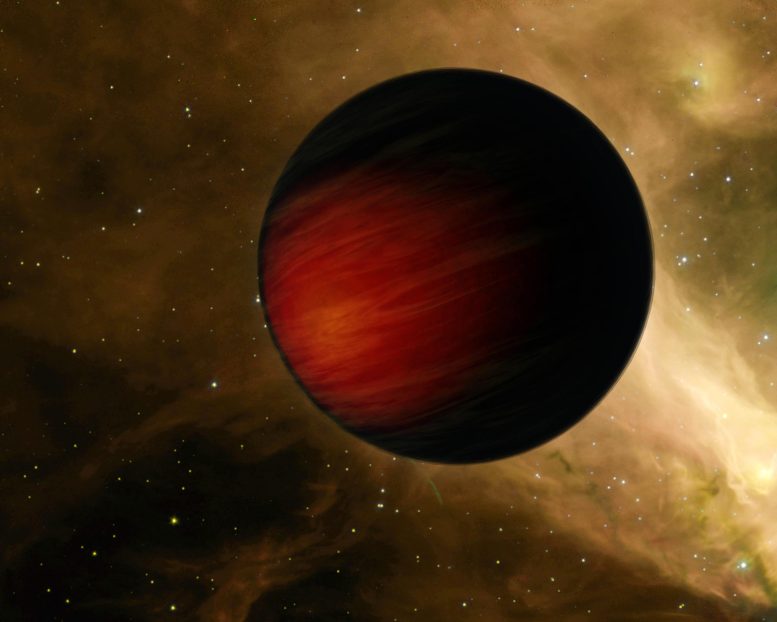
Astronomers using NASA’s James Webb Space Telescope have discovered that the atmosphere of exoplanet HD149026b is super-abundant in the heavier elements carbon and oxygen – far above what scientists would expect for a planet of its mass, and the carbon-to-oxygen ratio is elevated relative to our solar system, which could provide insight into planet formation and an important first step toward obtaining similar measurements for a large sample of exoplanets in order to search for statistical trends. Credit: NASA/JPL-Caltech
Gas giants orbiting our sun show a clear pattern; the more massive the planet, the lower the percentage of “heavy” elements (anything other than hydrogen and helium) in the planet’s atmosphere. But out in the galaxy, the atmospheric compositions of giant planets do not fit the solar system trend, an international team of astronomers has found.
Using NASA’s James Webb Space Telescope (JWST), the researchers discovered that the atmosphere of exoplanet HD149026b, a “hot jupiter” orbiting a star comparable to our sun, is super-abundant in the heavier elements carbon and oxygen – far above what scientists would expect for a planet of its mass. In addition, the diagnostic carbon-to-oxygen ratio of HD149026b, also known as “Smertrios,” is elevated relative to our solar system.
These findings, published in “High Atmospheric Metal Enrichment for a Saturn-mass Planet,” in the journal Nature on March 27 are an important first step toward obtaining similar measurements for a large sample of exoplanets in order to search for statistical trends, the researchers said. They also provide insight into planet formation.
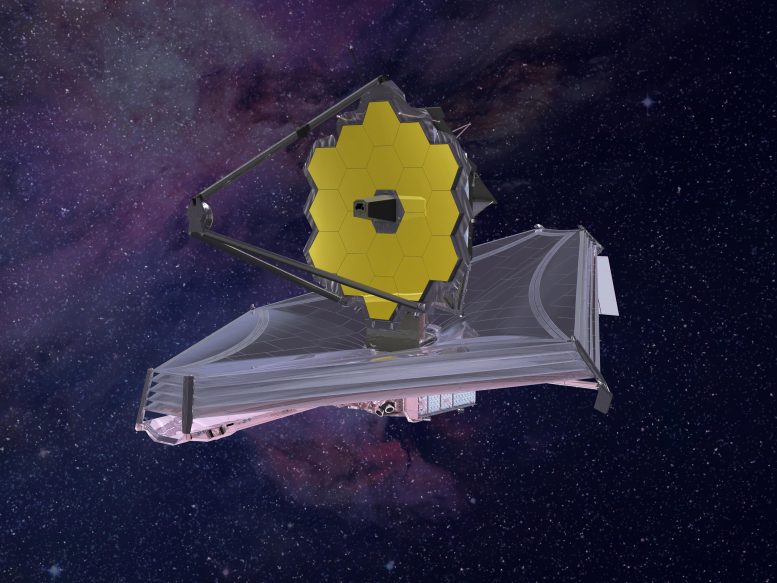
This illustration shows the cold side of the Webb telescope, where the mirrors and instruments are positioned. Credit: Northrop Grumman
“It appears that every giant planet is different, and we’re starting to see those differences thanks to JWST,” said Jonathan Lunine, the David C. Duncan Professor in the Physical Sciences in the College of Arts and Sciences and a co-author of the study. “In this paper, we have determined how many molecules there are relative to the primary component of the gas, which is hydrogen, the most common element in the universe. That tells us quite a lot about how this planet formed.”
The giant planets of our solar system exhibit a nearly perfect correlation between both overall composition and atmospheric composition and mass, said Jacob Bean, professor of astronomy and astrophysics at the University of Chicago and lead author of the paper. Extrasolar planets show a much greater diversity of overall compositions, but scientists didn’t know how varied their atmospheric compositions were, until this analysis of HD149026b.
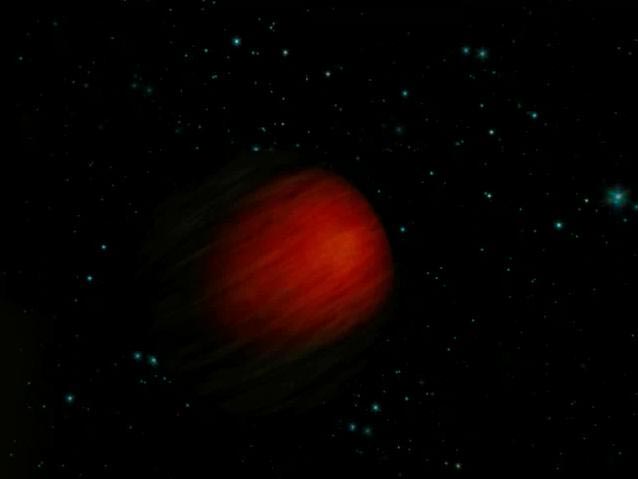
A ‘hot Jupiter’ called HD 149026b, is about 3 times hotter than the rocky surface of Venus, the hottest planet in our solar system. Credit: NASA/JPL-Caltech
“We have shown definitively that the atmospheric compositions of giant extrasolar planets do not follow the same trend that is so clear in the solar system planets,” Bean said. “Giant extrasolar planets show a wide diversity in atmospheric compositions in addition to their wide diversity of overall compositions.”
Smertrios, for one, is super-enriched compared to its mass, Lunine said: “It’s the mass of Saturn, but its atmosphere seems to have as much as 27 times the amount of heavy elements relative to its hydrogen and helium that we find in Saturn.”
This ratio, called “metallicity” (even though it includes many elements that are not metals) is useful for comparing a planet to its home star, or to other planets in its system, Lunine said. Smertrios is the only planet known in this particular planetary system.
Another key measurement is the ratio of carbon to oxygen in a planet’s atmosphere, which reveals the “recipe” of original solids in a planetary system, Lunine said. For Smertrios, it’s about 0.84 – higher than in our solar system. In our sun, it’s a bit more than one carbon for every two oxygen atoms (0.55).
“Together, these observations paint a picture of a planet-forming disk with abundant solids that were carbon-rich,” Lunine said. “HD149026b acquired large amounts of this material as it formed.”
While an abundance of carbon might seem favorable for chances of life, a high carbon-to-oxygen ratio actually means less water on a planet or in a planetary system – a problem for life as we know it.
Smertrios is an interesting first case of atmospheric composition for this particular study, said Lunine, who has plans in place to observe five more giant exoplanets in the coming year using JWST. Many more observations are needed before astronomers can discover any patterns among giant planets or in systems with multiple giant planets or terrestrial planets to the compositional diversity astronomers are beginning to document.
“The origin of this diversity is a fundamental mystery in our understanding of planet formation,” Bean said. “Our hope is that further atmospheric observations of extrasolar planets with JWST will quantify this diversity better and yield constraints on more complex trends that might exist.”
Reference: “High atmospheric metal enrichment for a Saturn-mass planet” by Jacob L. Bean, Qiao Xue, Prune C. August, Jonathan Lunine, Michael Zhang, Daniel Thorngren, Shang-Min Tsai, Keivan G. Stassun, Everett Schlawin, Eva-Maria Ahrer, Jegug Ih and Megan Mansfield, 27 March 2023, Nature.
DOI: 10.1038/s41586-023-05984-y
The study was supported by NASA and the University of Chicago.

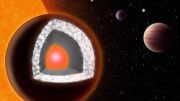

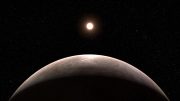
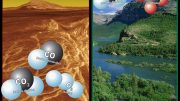
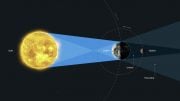
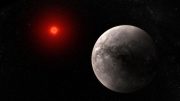
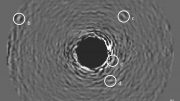
We are here to learn morer about our PLANT TOGETHER! why can’t we just keep on the right track for other GENERATIONS that will follow instead of continuing to lie, cheat,& steal for the ones that don’t have a HEART! Nor a Decent BONE in their body, but the 1’s that holds “GREED & for MONEY “. They don’t care if they don’t see a new GENERATIONS! They are COWARDS! afraid of the “TRUTH ” they will DIE 1 Day maybe even stay here to “SUFFER” for all their WRONG. STILL they will meet the JUDGEMENT DAY , ENTERNAL HELL for your SOUL isn’t where I PRAY you don’t END UP
Less magic, more care in writing and commenting on topic would be … well, decent.
I think the evidence will bear out that the size of a planet has less correlation to it’s composition than the distance of it’s formation from it’s parent star, perhaps also the size of it’s parent star (such that larger star sizes imbue planets with greater metallicity than smaller stars do to planets at the same orbital distance). Size matters, but isn’t a primary driver.